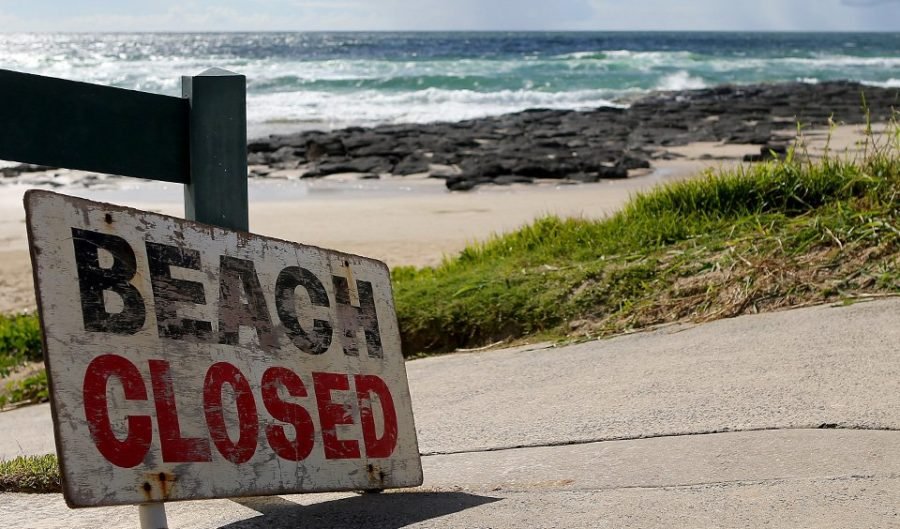Are shark attacks increasing?

AUSTRALIAN SCIENTISTS SAY THAT it’s our love of the water combined with population growth that is producing the pseudo-increase in shark fatality occurrences.
When the fourth fatal shark attack in six months happened this week, talk turned to the inevitable: are shark attacks increasing and why?
The most recent of those was particularly gruesome: Japanese national, Tadashi Nakahara, who was living in Ballina, was killed by what was believed to be a 3-4m great white shark (Carcharodon carcharias). The attack, at the popular family spot Shelly Beach, has attracted much media attention and given traction to the notion that shark encounters are on the rise.
But what do the records say? According to the Taronga shark attack file, since 1791, there have been 233 shark-attack fatalities in Australia, and 978 reported shark attacks; the figures tell us that about a quarter of shark attacks result in death.
Over that time, an average of about one death each year occurs from a shark attack. So four in 2014 and another in 2015 is well above average. Because the numbers are so low, though, a spike of 3-4 is quite insignificant and not unprecedented in the record.
And given that 34 people drowned at Australia’s beaches in 2014, you should be more worried about the waves themselves rather than what’s swimming beneath them.
Dr Mark Meekan, a fish biologist with the Australian Institute of Marine Science, Perth, says “our fear is very much disproportionate to the threat they pose”.
- Shark attacks in Australia: timeline
- Are humans to blame for shark attacks?
- Why sharks attack and how to avoid them
Australian customs suit shark feeding times
The simplest explanation for the spike in fatalities, says Mark, is likely part of a bigger increase in the number of people swimming in shark habitat and the cultural customs that come with summer.
“Water sports have become much more popular; surf breaks across Australia were a lot less crowded a decade ago than they are now,” he says.
In fact our human behaviours correspond with the nature of sharks’ feeding patterns, Mark adds. “People are surfing at dusk and dawn to escape the crowds; that in itself is creating a greater possibility of a shark encounter”, he says.
Not to mention that surfers, spearfishers and swimmers are heading to more remote and unpatrolled beaches. It should be noted that no fatalities, at least in recent memory, have occurred at patrolled beaches during patrol times.
Shark attacks not due to more sharks
One possible explanation for an increase in shark attacks thrown around is that shark numbers have increased in the wake of conservation measures. But that’s not a likely scenario.
Two separate marine science studies performed by Myer et al. 2007 and Mackenzie et al. 2009 reported that “more than 90 per cent of all top marine predators have disappeared from the oceans”. This dramatic shark decline is largely due to global overfishing.
There is a growing market for shark fin, in China especially, says Mark. “To impress your guests you serve them shark fin in the first meal,” he says. “It has become a symbol of wealth in China.”
However, the sharks often responsible for attacks – great whites, tigers, bronze whalers and bulls – may have had recent population increases in response to bolstered numbers of bait fish.
Shark attacks a case of mistaken identity
Humans are not typically preyed upon by sharks. Attacks are likely a case of mistaken identity by the more aggressive species of shark.
Great whites have an ‘ambush system’, Mark says. “They attack the victim, usually marine mammals like seals, with what can be a fatal bite, leave them to bleed, and then return to the prey to feed”.
This is why human victims are usually left alone after an attack; our lack of tasty, nutritious blubber is not favourable to sharks, says Mark.
Shark cull a knee-jerk response
This chain of summer attacks follows the heated national debate on shark culls off the Western Australian coast. The controversial Western Australian Government’s ‘catch and kill’ policy was dropped by the WA Environmental Protection Authority (EPA) before the 2014/2015 summer. A total of 68 sharks were caught and shot during the drum-line trial in WA from January to April, 2014.
“The WA EPA and the WA government are to be congratulated for…recognising that drum lines don’t save lives and that there are much better ways to increase ocean safety than destroying animals that are essential to ocean health and threatened globally” Professor Jessica Meeuwig, of the University of Western Australia, told The Conversation in September, 2014.




